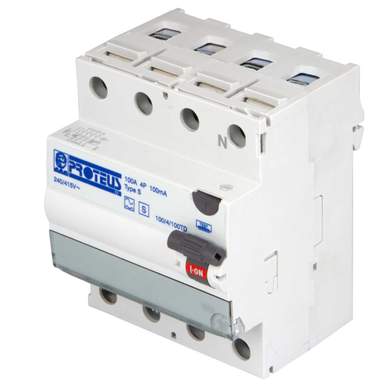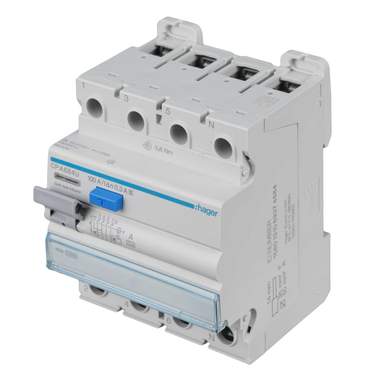- Reaction score
- 4,169
Only the compact ones.All fusebox RCBOs are now switched neutral. I don't think they make any other kind now.
Discuss Correct Type-S Upfront RCD for 3Ph TT System in the UK Electrical Forum area at ElectriciansForums.net
Only the compact ones.All fusebox RCBOs are now switched neutral. I don't think they make any other kind now.
So I will use something like this (found a type A time delay) which I will put in a separate enclosure to replace that 100A isolator.

They are definitely DP as they're the mini ones.If those fusebox rcbos aren't switched neutral your gonna have a problem....
The tails appear to all be visible there so I wouldn't add upfront rcd protection to anything other than the submain going off to the kitchen.
The full height are
Line to earthWhat type of fault.
Just did so quick research and can find nothing to suggest Fusebox have made full height RCBOs that switch both poles. Their new AFDD RCBOs are tall and switch both poles.
They would have to be in closed proximity to any earthed metalwork and be prone to damage from the metalwork but I assume they are not.Line to earth
They would have to be in closed proximity to any earthed metalwork but I assume they are not.
As @westward10 says the requirement for ADS is independent of how it is achieved
TT systems have a shorter disconnect time requirement than TN as any metalwork normally goes to more or less full line voltage during a fault, where as TN is usually around half line voltage. That higher voltage is due to the Ze for a TT system typically being many ohms, so not much current flows and so the line is not "pulled down" much during the fault.
And it is this lack of a high PFC that makes meeting ADS difficult to impossible without the use of an RCD, as often the PFC could be less than the normal OCPD rating!
The second point is the risk of a fault needing ADS.
In the case of plastic enclosures (which are no longer done for domestic due to the fire aspect) there is very little risk of a tail shorting to metalwork, so they probably don't need protection. Even with a metal CU if the tails enter via a proper gland and are correctly terminated and tightened the risk could be argued to be very small (even more so if the 19-strand flexible tails are used so less forces on the main switch, etc)
So if the final circuits are all on RCD protection then you probably don't need the up-front RCD, though having one has the slight advantage of no single point of failure (i.e. a failed/stuck final RCD/RCBO would not cause all CPC to go live as the incomer would trip after ~0.2s).
A SWA sub-main is altogether different as a fault there is very likely to result in such a short and then without up-front RCD very unlikely to disconnect!
Traditionally (i.e. in the days before the 30mA additional protection for shock was common) a TT system would have a RCD incomer (or before that, a VOELCB) as the sole means of meeting ADS due to the high cost of the RCD. And to keep nuisance tripping down it would often be 100mA rated and possibly with a delay. These days practically all domestic circuits need 30mA RCD so that is no longer common.
But if you do need an up-front RCD(s) for any reason then to achieve selectivity you need to meet several conditions:
Few systems have more than two in cascade, so typically you see 100mA or 300mA "S" selective ones used, but if you go to bigger systems you get adjustable MCCB ones where you can dial in the trip current and the trip times to suit the overall system design if 3 or more are used in series.
- The trip current should be around x3 higher (or more) so a low level fault still is sure to disconnect on the down stream one (as typically RCD trip somewhere between 0.5 and 1 In). E.g. 30mA would trip before a 100mA rated one reached 50mA where it might decide to go.
- The upstream one should take about 0.2s longer then the next one down, so under high fault current conditions (where all RCD have trip level exceeded) the one closest to the fault can disconnect before the up-stream ones decide to act.
- To avoid a N-E fault tripping out the upstream ones, the downstream has to disconnect N as well. Traditionally RCD always do that, but until recently few RCBO would do so.

Yes, so long as the RCD has some form of 100A limiting there such as from the DNO fuses, or sum of down-stream OCPD.I assume that in my instance it is okay to have the RCD before the switched fuses given some of the phases have been split with henleys to provide 5 supplies?
Reply to Correct Type-S Upfront RCD for 3Ph TT System in the UK Electrical Forum area at ElectriciansForums.net








We get it, advertisements are annoying!
Sure, ad-blocking software does a great job at blocking ads, but it also blocks useful features of our website. For the best site experience please disable your AdBlocker.
